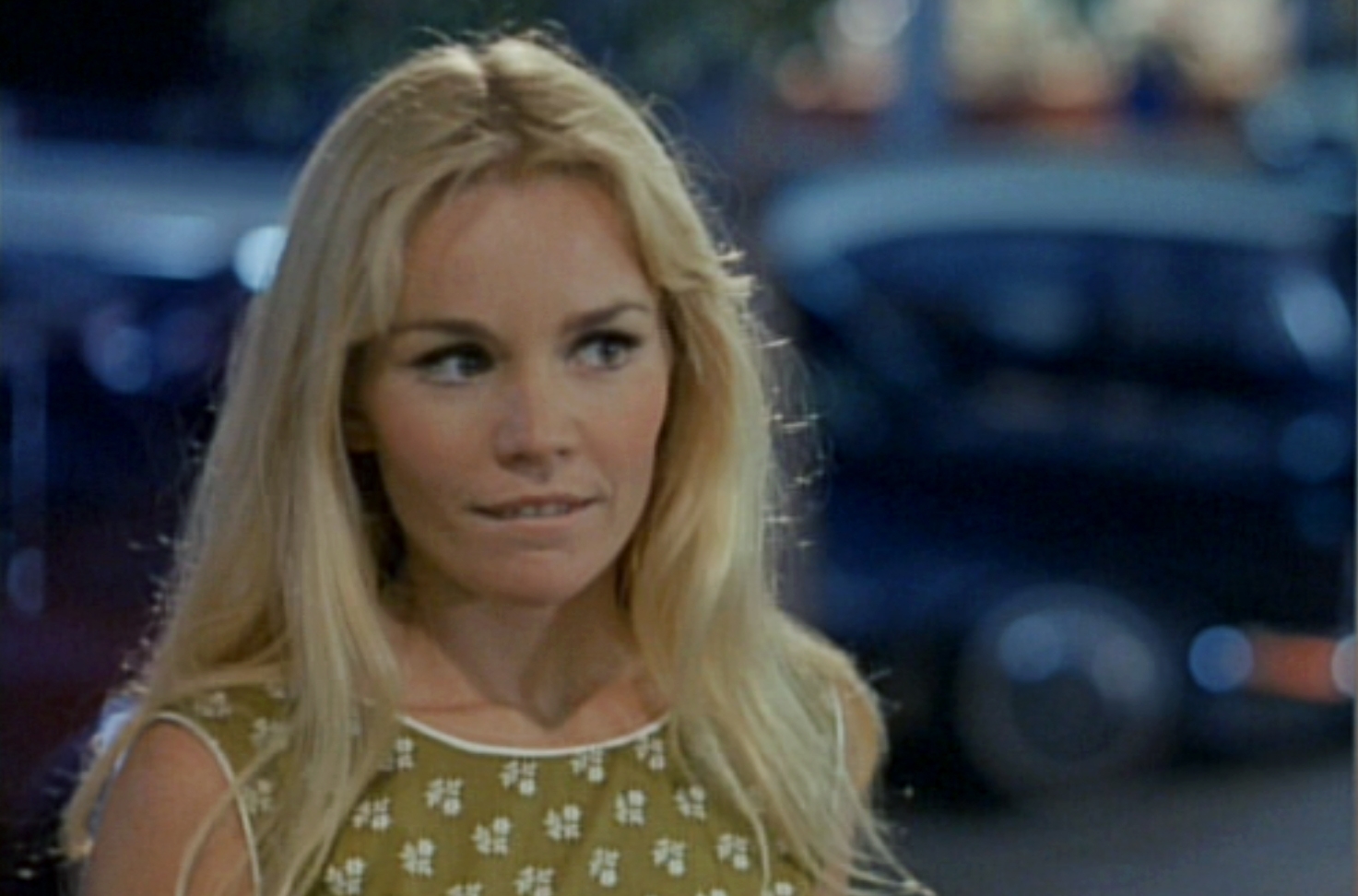Tuesday & Tony: Borderline Personalities
By the late '60s both Tuesday Weld and Anthony Perkins had become thoroughly disenchanted with Hollywood. The two actors were considered “rising stars” of the early 1960s, fresh faces that defined the look of the new generation. But as the decade wore on they were forced to repeat the roles that made them famous time and again and felt unable to mature as artists.
Tony Perkins was dismayed by being typecast after Hitchcock's Psycho (1960) into playing a series of "creepy types," seemingly normal young men whose charm masked a darker side of psychosis and homicidal tendencies. The oppressive lengths he had to go to conceal his relationships with men (including fellow actor Tab Hunter) sent Tony back and forth to Europe in search of weightier roles that Hollywood was not offering. After an early start at age 16 on the TV show The Many Loves of Dobie Gillis in 1959, Tuesday Weld’s on-screen roles became a collection of fluffy, spacey blondes. Her attempt at establishing a mature career as a serious actress was undermined by her poor choice of parts—she turned down Lolita (1962) and Bonnie and Clyde (1967), among others—and her independent nature that clashed with directors and producers.
By the time the two co-starred in Pretty Poison (1968), they were ready to kill off the on-screen alter egos that had been fashioned for them. The film starts off innocently enough: Dennis (Tony), a bright young man recently released from a mental hospital, takes a job at a paper mill in a small town in Massachusetts and takes a shine to the prettiest high school girl in town, Sue Ann (Tuesday). Sue Ann is intrigued by Dennis, who's a bit older than her and unlike anyone else in town, especially when he confides in her that he's performing a very important, top secret mission for the government and he needs her help.
While Dennis's gimmick about being an undercover CIA agent is a charming way to establish an intimacy with Sue Ann, it quickly escalates into a "counter terrorism" plot involving Dennis' paper mill. As we begin to learn more about why Dennis was originally placed in the hospital, the more it looks like he's manipulating Sue Ann and putting her in harm's way. But things change after a nighttime attack on the mill that ends in violence. Dennis realizes he’s gone too far, but once Sue Ann gets a taste for blood she wants more. Now it’s Sue Ann who’s leading their game—raising the stakes and dragging Dennis along with her.
Pretty Poison is enjoyable in its own right as a depraved thriller that's played more for satire than sadism, and it is also terrific watching both actors break down the stereotypes that had hindered their growth for so much of the decade. As Dennis, Tony turns his typical twitchy, on-the-edge character into a forthright and loyal man, as naive in his own way as Sue Ann appears to be. And Tuesday has a field day with Sue Ann, retaining the look and charm of a small town sweetheart but exposing all the selfishness and heartlessness that perhaps many of these girls really have, and slathering on a homicidal zeal for good measure.
If Pretty Poison allowed these two to subvert and pervert their "types," Play It As It Lays (1972) allows the actors to examine in a painfully mature way who they really were as the 1970s began. Tuesday plays Maria Wyeth, a lackluster actress who experienced early success as a spacey blonde in her husband's films but is now deciding whether she should pursue a serious career, salvage her marriage, or continue to live at all. Her severe depression is exacerbated by the diagnosis of her young daughter as schizophrenic. Her husband Carter (Adam Roarke) wants to commit their daughter to an asylum and move on with their lives, but Maria can't give up on the child she identifies with so much. Her only real friend and confidante is BZ, played by Tony, who is a successful film producer grown weary of having to conceal his interest in men with a sham marriage orchestrated by his mother.
Maria (Weld) has a tender moment with her husband Carter (Roarke)
Sound familiar? Although the film is a faithful adaptation of Joan Didion's novel of the same name, the casting of the two leads in Play It As It Lays is dead-on. Maria and BZ often meet at his house to compare melancholias, with BZ cracking morbid jokes about his daytime parties and Maria recounting recent adventures that range from wild self-destruction to catatonic depression. Scared of reaching BZ’s level of acceptance of his despair, she confides to him, “I don’t ever want to be where you are,” to which BZ replies, “You don’t want to be, but you will.”
The bleak message of Play It As It Lays is contrasted by cinematographer Jordan Cronenweth’s vibrant photography that captures the beauty of Didion’s Southern California desolation. Cronenweth, who worked on Blade Runner (1982)—as well as Sleeping All Day favorites Cutter’s Way (1981) and State of Grace (1990)—creates montages of Maria’s aimless drives around LA that juxtaposes beautiful sunsets and close-ups of Tuesday’s face with overhead shots of snaking geometric freeways and billboards that are bright, smiling, and vapid. These passages, scored to upbeat FM radio, become a chorus throughout the film that displays the hollow and seductive power of Maria and BZ’s “new Hollywood” bohemia.
Tony Perkins never played a more nuanced character than BZ. Although he still displays some of the wisecracky, birdlike charm of the “old Tony” there’s now a languid patience and a weariness to his behavior that’s sincere and humbling. He’s no longer the buoyant young man about to leap out of his chair, but an exhausted soul who’s seen everything and believes in nothing. Unlike her earlier fresh blondes, Tuesday’s Maria is a woman intent on pleasing no one. Her hair is wild, her face sunburned, and her smiles seldom. As Maria, she develops a mature confidence and poise throughout the film as her character comes closer to the edge. Whether that’s the edge of madness or of finally accepting her true self is for the viewer to decide.
Unlike Maria and BZ, who each find their own irrevocable escape from Tinseltown by the end of Play It As It Lays, Tuesday and Tony spent the next few decades swirling around Hollywood in increasingly tangential ways. Tony Perkins appeared in films here and there, no longer as a leading man but strictly a supporting player—with the exception of Psycho II (1983) and Psycho III (1986). He passed away from AIDS in 1992. Tuesday Weld still performs in films occasionally, and over the years has built up a track record of solid supporting performances in films like Who’ll Stop the Rain (1978), Thief (1981), Once Upon a Time in America (1984), and Falling Down (1993). When once asked what drove her away from the Hollywood spotlight of her youth she replied, “I think it was a Buick.”
Pretty Poison is available online from Vudu, Fandango Now, Amazon, and Apple. It is also available on DVD from Netflix. Unfortunately Play It As It Lays has never been available on home video (at least not to my knowledge). "Grey area" copies can be found online and it shows occasionally on the Sundance Channel. I was fortunate enough to see this film in the theater at the Castro in San Francisco and the print was sharp, vibrant, and colorful. The movie is definitely worth the hunt! Subscribe to Sleeping All Day













